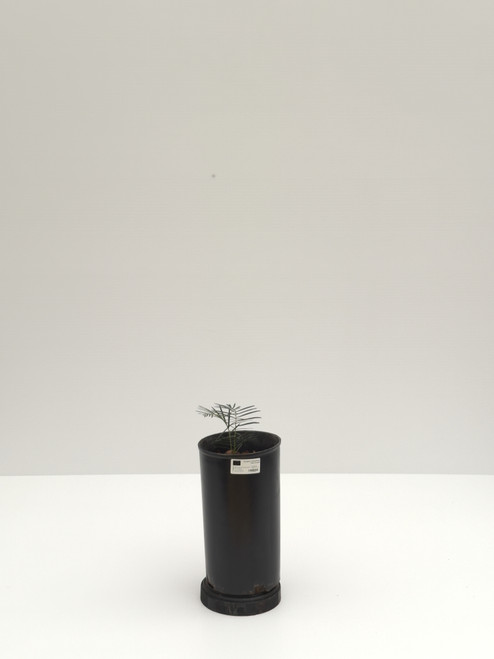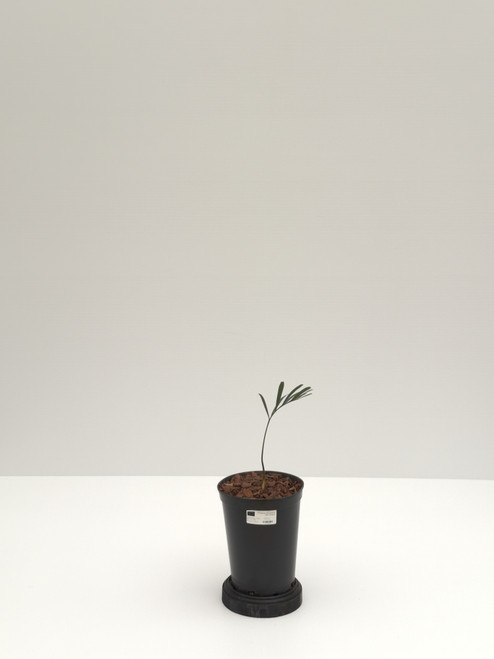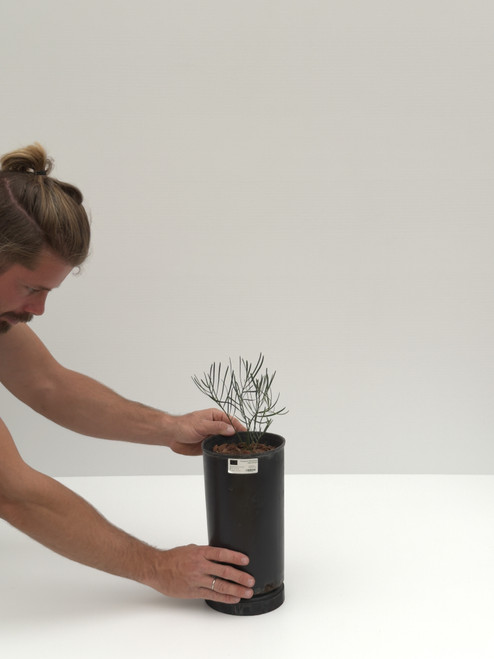Product Description
A new species from southeastern Queensland, described as recently as 2001 by renowned Australian botanists and Macrozamia specialists David Jones and P.I. Forster. It has an underground trunk and numerous flat, glossy green, pinnate leaves. In cultivation it will do well in all warm temperate climates and can be grown in full sun as well as in shade. (RPS.com)
Species details
- Kingdom
- Plantae (plants)
- Class
- Equisetopsida (land plants)
- Family
- Zamiaceae
- Scientific name
- Macrozamia serpentina D.L.Jones & P.I.Forst.
- WildNet taxon ID
- 27445
- Nature Conservation Act 1992 (NCA) status
- Endangered
- Conservation significant
- Yes
- Confidential
- Yes
- Endemicity
- Native
- Pest status
- Nil
- Short Notes
- Gymnosperm, plus carpological
- Description
- Macrozamia serpentina is a cycad with an underground stem, 15-25cm in diameter, and a sparse crown of 5-12 obliquely erect or spreading mature leaves 0.2-1m long and flat in cross section. The petioles (leaf stalks) are 2-15cm long, with the base covered in grey soft, wool. Each leaf consists of 70-100 leaflets arranged on a straight (not twisted) rhachis. Leaflets are flat, widely spreading, 15-45cm long by 4-8mm wide, dark green above and paler beneath, with a white callous base. The lower 5-8 pairs are reduced to spines (pinnacanths).
The male cones are cylindrical, green, 12-20cm long and 2.5-3.5cm in diameter. The female cones are cylindrical to barrel-shaped, green, 14-22cm long and 6.5-8cm in diameter. The seeds are oblong to ovoid (egg-shaped), 1.8-2.5cm long, 1.5-2cm wide and light orange to red when ripe.
Macrozamia serpentina is closely allied to M. miquelii but is smaller, with smaller and fewer leaflets and smaller, thinner cones. The female cones also have shorter apical spines on the megasporophylls (scales). (Forster et al. 1994; Jones et al. 2001) - Habitat
- Macrozamia serpentina occurs in low eucalypt woodland with a mixed grassy understorey at altitudes between 80-160m above sea level. It grows on steep rocky slopes on red clay loams and serpentinite soils. (Jones et al. 2001)
- Behaviour
- Macrozamia serpentina cones are attended by thrips, Cycadothrips chadwickii. (Jones et al. 2001)
- Reproduction
- The cones of Macrozamia serpentina shed pollen between October and November. The seeds ripen between March and May. (Jones et al. 2001)
- Notes
- Contributors: Ailsa Holland, Mellisa Mayhew 18/06/2009
- References
- Forster, P.I., Machin, P., Mound, L. & Wilson, G. (1994). Insects associated with the reproductive structures of cycads in Queensland and north-east New South Wlaes, Australia. Biotropica 26: 217-222.
Herbrecs (2008). Macrozamia serpentina, in BriMapper version 2.12. Queensland Herbarium. Accessed 09/10/2008.
Jones, D.L., Forster, P.I. & Sharma, Ish K. (2001). Revision of the Macrozamia miquelii (F.Muell.) A.DC. (Zamiaceae section Macrozamia) group. Austrobaileya vol. 6(1): 90-2. - Profile author
- Ailsa Holland (18/06/2009)
- (https://apps.des.qld.gov.au/species-search/details/?id=27445)






















